Excavation of deposit 14 has been underway for almost 2 months now and has been very fruitful, as expected, due to what we have already seen in the amount of spill-over fossils that were put in buckets when the deposit was removed from the ground, as demonstrated here by Andie in a previous blog. But before we could poke our dental picks in the top asphaltic sugar sand already showing signs of large bone we had to transform the highly awkward box into something we could work with.
This is how it came to us, after protective tarp removed
The actual deposit is the darker colored sediment in the center. It fell apart when they were trying to excavate it and came to us wrapped with a few boards and metal bands, then plastic, and then supported by tons of the sterile "fill" dirt within the space of the tall box. 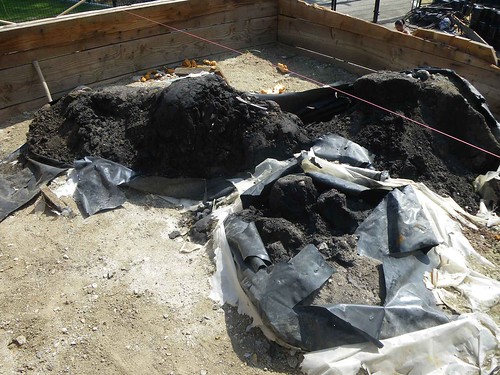
Box excavation preparation included cutting the metal bands that crossed over the top of the box, assembling scaffolding, removing front top board so the public can see us work, affixing handrails for easier boarding, setting up a shade canopy, and determining grid lines, and then box 14 was ready for digging!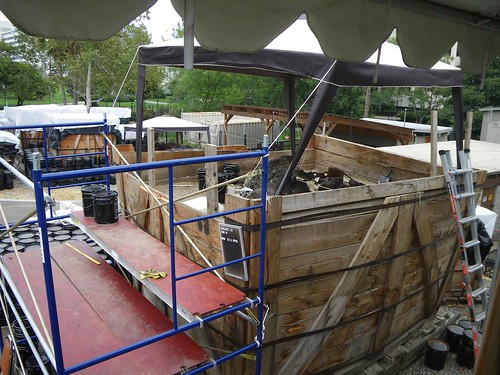
The fossiliferous asphaltic sugar sand midsection of the deposit is relatively easy to dig in. It softly peels and crumbles away from the bone. We never have it completely easy though, as within it there are also spots of hard oxidized asphalt as well as bones that have already been fractured. Given that the deposit was disturbed upon excavation we also have not been taking three point orientation measurements of bones as they are believed to be disrupted from their original position. The only data thus far taken has been the grid and level that the fossil is found in.
Included in what we have found so far:
turkey, and hawk
indicate its young age, possibly younger than any mastodon in the RLB
collection, along with a tibia
Meet "Snuffleupagus" or "Dumbo"
field photo
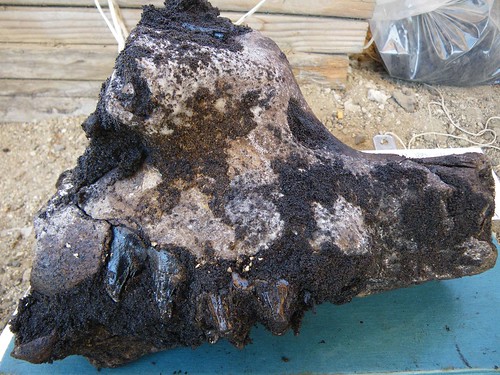
after some cleaning by Henry

Also, here's an example of what the main fossil deposit in 14 looks like

and the bird beak I found (my first), which is eagle sized
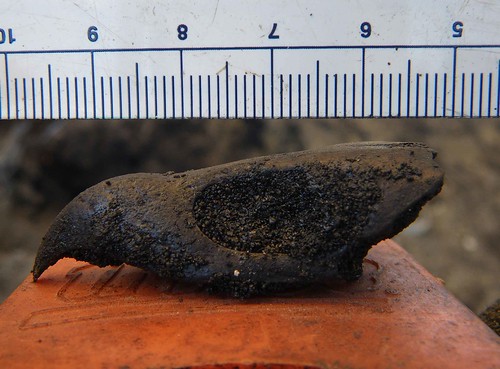
and the perfect furcula from a medium sized hawk that Michelle found

Deposit 14 has been worked down two levels and in order to continue we
have started removing fill dirt so that we can remain excavating from the deposit's side. Last week bucket by bucket we removed over a ton of fill. Literally. Thank you Sunday volunteers Karin Rice, Bruce Fischer, and Katelynn Simpson for being awesome dirt movers!
Now this is 14's current look
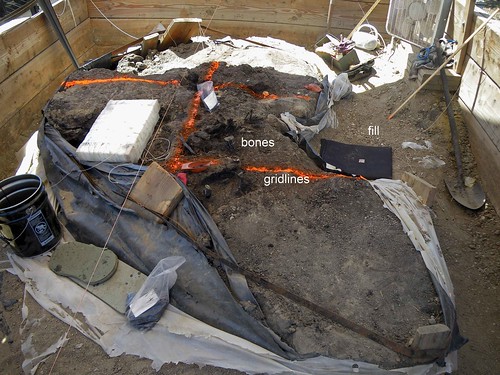
In other P23 news the reopening of the rather non-fossiliferous deposit 7a has yielded 3 horse cervical vertebrae and progress has been excellent in box 1. More updates are to come!!!



3 comments:
Awesome work, guys!
Very cool mastodon. Would like to see what box 1 looks like now.
Miss you all!
Ryan
Wow, wow, wow! I am so jealous. The baby mastodon, the bird beak (aaahh!!!) and the turtles are exciting!
Wow so cool...
Post a Comment